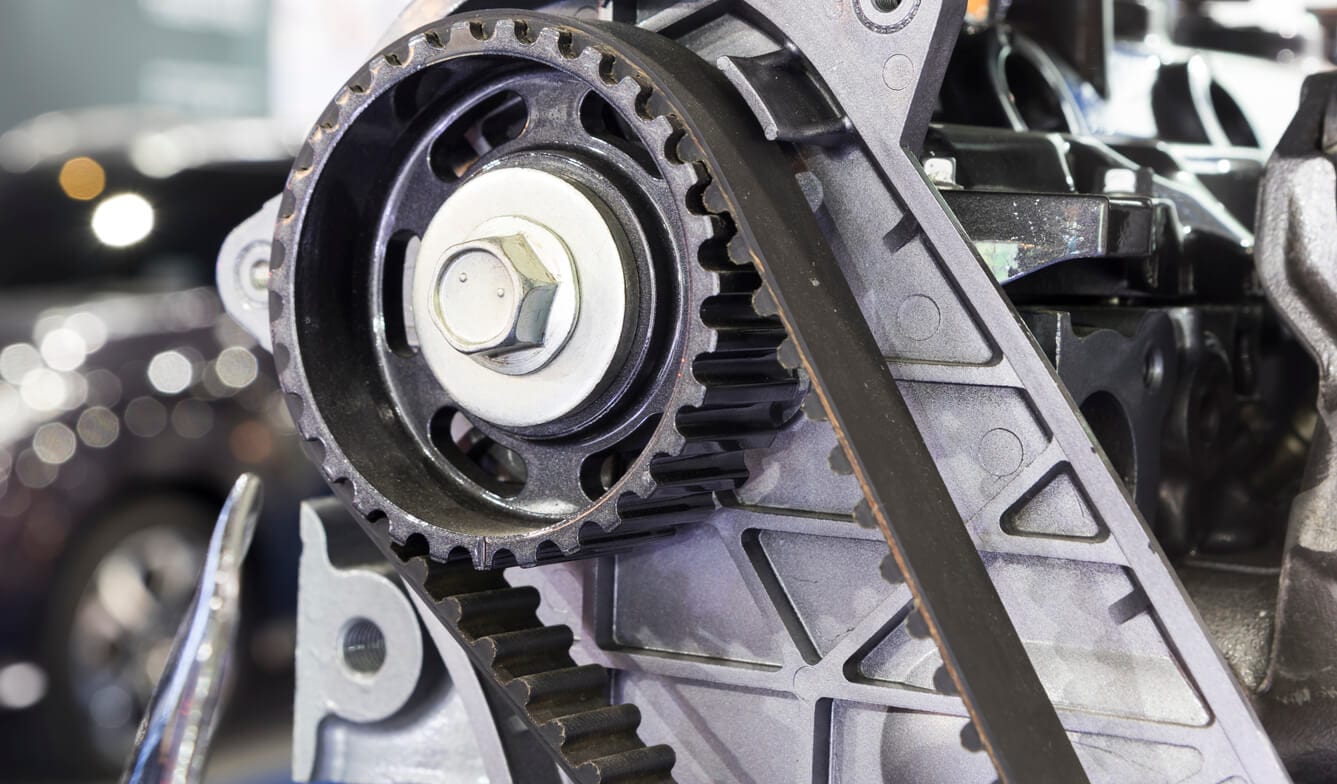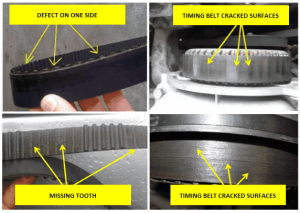

Timing is everything. For relationships, cooking, music,—even engines! That’s because your car’s engine relies on a timing belt to stay in sync.
Knowing about timing belt replacements will save you from unexpected breakdowns, keeping you safe on the road. Replacing the timing belt is an important maintenance item, which means you should understand how a timing belt works and when to replace it.
What is a Timing Belt?
A timing belt is an essential part of your engine. Think of it as a bike chain for your vehicle—it keeps all the moving parts of an engine in sync. It synchronizes movement between the crankshaft and camshaft allowing valves to open and close at the correct time so that your engine can run properly.
Do All Cars have a Timing Belt?
No, many modern cars have a timing chain instead. It functions the same as a belt, but it is metal instead of rubber. A timing chain has a longer lifespan which means you may be able to go longer before replacing it. As always, check your owner’s manual or give us a call to be sure!
When does the Timing Belt Need to be Replaced?
Is the timing right? For most cars, recommended timing belt replacement intervals vary between 60,000 and 106,000 miles. For some modern cars, the intervals are even longer. Some carmakers also list the time intervals (ex: every 7 years). To know when to replace a timing belt in your specific vehicle, check out your owner’s manual. Because the timing belt is made of rubber, it will wear down over time and eventually break. If you don’t replace it at the recommended time, you could end up with engine failure, broken or bent valves, cylinder head or camshaft damage, and piston and cylinder wall damage.

Worn-out timing belt
8 Signs that It’s Time to Replace the Timing Belt
Often, there aren’t any warning signs before a timing belt breaks. But here are some possible indicators that it might be time to replace your belt:
- Decreased engine power: this could be a symptom of a stretched timing belt
- Overheating
- Vibrating or shaking
- Trouble starting the vehicle: A broken timing belt results in no compression between parts of your engine and getting it started will not be possible
- Squealing or rubbing noises from the belts
- Ticking noise coming from the engine
- Leaking oil: Oil can leak from behind the timing belt where the oil pump, various seals, and RTV are supposed to keep the engine from leaking
- Check engine light: this could also be a symptom of a stretched timing belt
Can the Condition of the Timing Belt be Inspected?
Yes. The timing belt is protected by plastic or metal covers. Our certified technicians can remove one of the covers and visually check the timing belt condition.

Is it Necessary to Replace the Water Pump, Timing Belt Tensioner, and Other Hardware when Doing the Belt?
It is usually recommended because, in some cars, a hydraulic timing belt tensioner is known to leak and fail at higher mileage and the water pump also wears out over time.
Timing Belt Repair & Replacement at Luke’s Auto Service
Replacing the timing belt before it breaks will prevent engine damage and save you money in the long run. If you’re unsure about if your belt needs to be replaced, stop by Luke’s Auto Service in Essex County today.
Our expert ASE-certified technicians will examine your vehicle, identify any damage to your belt, and replace it with top-notch service! Just a reminder: We will be closed from Monday, August 16-August 20, and will reopen Monday, August 23rd!
References & Image Credit:
